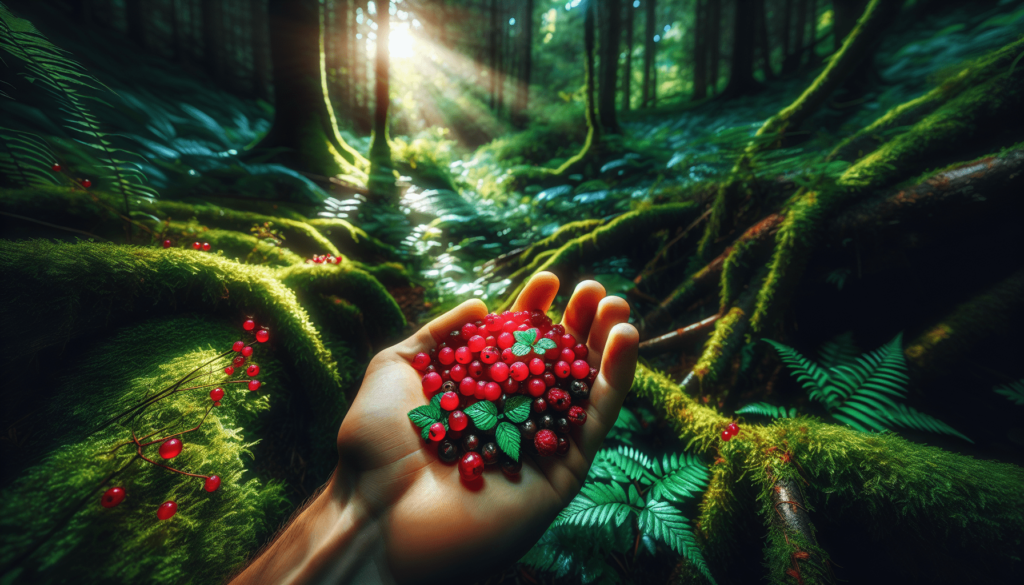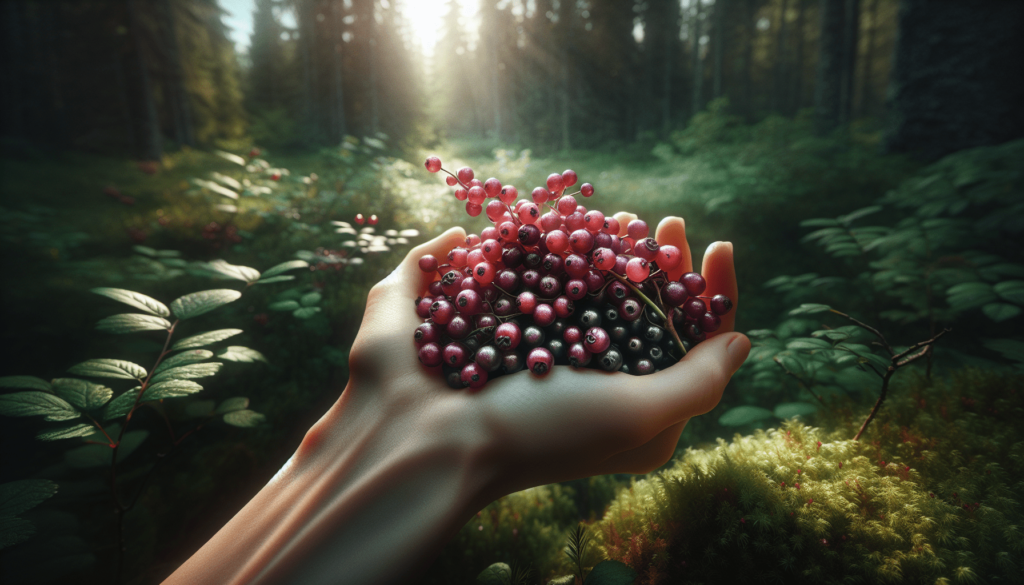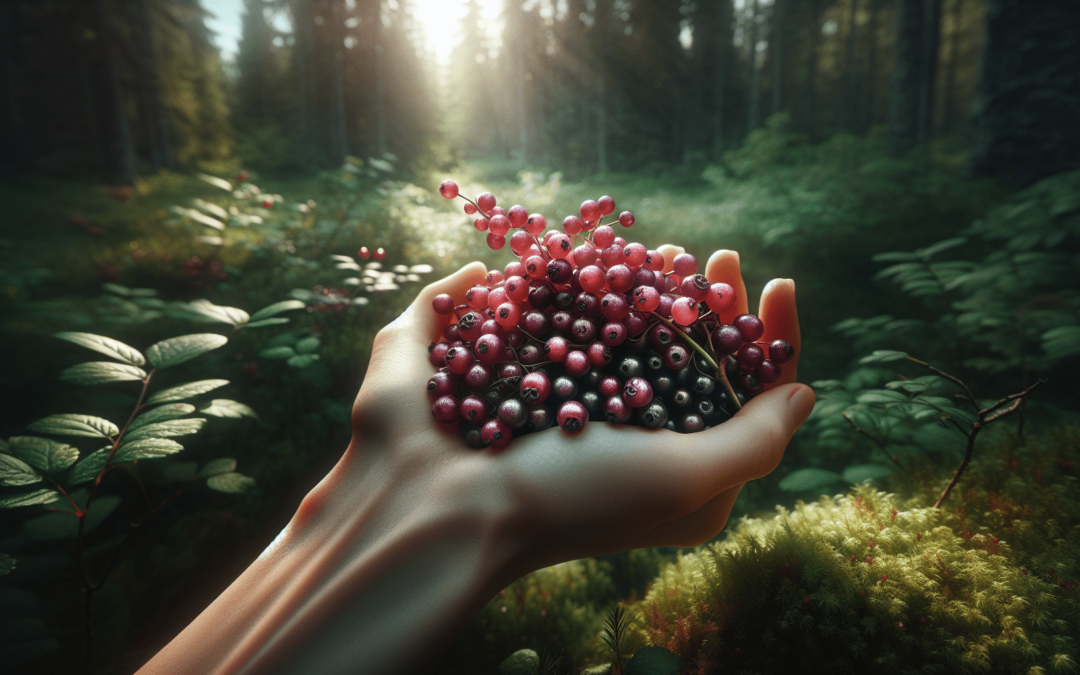Foraging for Wild Edibles: A Survival Guide is your ticket to discovering the natural bounty that surrounds you. This guide takes you on an enchanting journey through fields and forests, teaching you not only how to identify edible plants but also how to harvest them sustainably. With tips on safe foraging practices and delicious recipes, you’ll learn to appreciate nature’s larder in a whole new way. Whether you’re a seasoned hiker or a curious beginner, this survival guide empowers you to confidently and responsibly gather nature’s gifts. Have you ever wondered what it would be like to survive in the wild, feeding yourself solely on what nature provides? Foraging for wild edibles can be a thrilling and rewarding way to connect with nature, learn survival skills, and even enjoy some delicious wild foods. Whether you’re looking to add some natural flavors to your meals, develop new survival skills, or simply explore the great outdoors in a new way, this guide will provide you with the knowledge you need.
What is Foraging?
Foraging refers to the practice of searching for and harvesting wild food resources. This ancient practice has been a survival skill for humans for thousands of years, long before agriculture revolutionized food production. With a little knowledge and safety precautions, you can tap into this primal way of gathering sustenance.
Why Forage?
Foraging is more than just a way to find free food. Here are a few reasons why you might want to give it a try:
- Health Benefits: Wild foods often contain more nutrients and fewer chemicals than their cultivated counterparts. They are free from pesticides, and are often more diverse in their nutrient profiles.
- Environmental Impact: By foraging, you reduce your carbon footprint, supporting a more sustainable way of eating.
- Skill Development: Learning to identify and harvest wild edibles can be a valuable survival skill, something that could be crucial in emergency situations.
- Connection to Nature: Foraging promotes mindfulness and a deeper connection to the natural world, enriching your outdoor experiences.
Essential Foraging Tools
Before you head out into the wild, make sure you have the right tools and gear to forage safely and efficiently.
| Tool | Purpose |
|---|---|
| Field Guide | Helps you identify plants accurately. Choose a region-specific guide. |
| Basket/Bag | For collecting your finds. Use a breathable container to keep plants fresh. |
| Knife/Scissors | Handy for cutting plants or roots. A good quality knife is essential. |
| Trowel | Perfect for digging up roots and tubers. |
| Gloves | Protect your hands from thorns, poisonous plants, or other hazards. |
| Notebook + Pen | Use to take notes or sketch plants you find, which can help with identification later. |
| Water & Snacks | Staying hydrated and energized is important, especially in unfamiliar terrain. |
| First Aid Kit | Always be prepared for minor injuries while out in nature. |
| Mobile Phone | For emergencies and reference photos. |

Foraging Safety Tips
Safety when foraging cannot be overstated. Make sure to always follow these guidelines to protect yourself and Mother Nature.
- Know Before You Go: Always positively identify any plant before eating it. Misidentification can lead to poisoning or worse.
- Start Slow: Don’t aim to gather a whole meal on your first go. Start by identifying a few edible plants and gradually increase your repertoire.
- Use Your Senses: Use sight, smell, and sometimes taste (in small, cautious amounts) to help identify plants.
- Sustainable Harvesting: Take only what you need and never uproot entire plants unless they are invasive species.
- Leave No Trace: Respect nature. For example, some wild plants are protected, or endangered and should not be disturbed.
- Know the Laws: Some places have regulations about what and where you can forage. Make sure you are informed about local rules and guidelines.
Starting with Easy-to-Identify Edibles
Every region has its own unique flora, but here are some easy-to-identify and commonly found wild edibles you might encounter:
Dandelions
These ubiquitous plants are entirely edible – from root to flower. Dandelions are known for their medicinal properties and nutritional benefits such as being rich in Vitamins A and C. They can be added to salads, soups, or even made into tea.
How to Identify Dandelions
- Leaves: Coarse and toothed edges resembling a lion’s tooth.
- Flowers: Bright yellow and composite, turning into a white puffball of seeds.
- Location: Lawns, fields, and disturbed soils.
Wild Garlic (Allium ursinum)
Wild garlic, also known as ramsons, fills the spring air with a distinctive garlicky aroma.
How to Identify Wild Garlic
- Leaves: Broad, lance-shaped, and strongly smelling of garlic.
- Flowers: White, star-shaped, growing in clusters.
- Location: Damp woodland areas.
Chickweed (Stellaria media)
Chickweed is found in abundance almost everywhere and is packed with nutrients. Its mild flavor makes it a great addition to salads and sandwiches.
How to Identify Chickweed
- Leaves: Small, oval with a pointed tip, smooth with a fine line of hair along one side of the stem.
- Flowers: Small, white with five deeply notched petals.
- Location: Gardens, fields, and disturbed soil areas.
Wood Sorrel (Oxalis)
Wood sorrel is easily recognizable and has a pleasant sour taste due to its oxalic acid content.
How to Identify Wood Sorrel
- Leaves: Heart-shaped, trifoliate resembling clover leaves.
- Flowers: Typically yellow, white, or pink with five petals.
- Location: Shaded woods, garden beds, and grassy areas.

Seasons of Foraging
Different plants and edibles will be available depending on the time of year. Here’s a quick look at what you can forage during each season.
| Season | Available Edibles |
|---|---|
| Spring | Nettles, wild garlic, chickweed, dandelion, and wood sorrel. |
| Summer | Berries (blackberries, raspberries), elderflowers, mulberries, and wild greens like purslane. |
| Autumn | Mushrooms, nuts (acorns, chestnuts), autumn berries (hawthorn, rose hips), and root vegetables like burdock. |
| Winter | Not much to forage, focus could be on stored nuts, seeds, and the occasional root vegetable found easily during thaw. |
Preparing and Cooking Wild Edibles
Knowing how to cook or prepare wild foods is as important as knowing how to find them. Some wild edibles can be eaten raw, but others require cooking to neutralize toxins or to make them more palatable. Here’s how to handle a few of them:
Dandelion
- Leaves: Use young leaves in salads or sauté them like spinach.
- Flowers: Use to make dandelion wine or add to batter for fritters.
- Roots: Roast the roots to make a coffee substitute.
Wild Garlic
- Leaves: Chop and mix into sauces, soups, or salads.
- Flowers: Use as a garnish for a burst of color and flavor.
Chickweed
- Leaves: Eat raw in salads, add to sandwiches, or cook like spinach.
- Stems and Flowers: They are also edible and can be used similarly to the leaves.
Wood Sorrel
- Leaves: Add to salads, soups, or enjoy as a snack. It adds a lemony flavor to any dish.
- Flowers: Use as an edible garnish.
Advanced Foraging: Intermediate & Difficult-to-Identify Edibles
Once you are comfortable with the basics, you might want to explore more advanced foraging. These plants can be trickier to identify and may have dangerous look-alikes, so caution and experience are necessary.
Mushrooms
Mushroom foraging is thrilling but risky, given the number of toxic varieties. Only forage mushrooms if you are 100% sure of their identification.
Popular Edible Mushrooms:
- Morels: Honeycomb-like caps, grow in spring.
- Chanterelles: Trumpet-shaped with a fruity smell often found in mossy woods.
- Porcini: Large, brown caps with a thick stem, often found near trees.
Wild Berries
While many wild berries are edible, some can be poisonous. Always cross-reference with a field guide.
Edible Berries:
- Blackberries: Found in brambles or hedges, dark purple to black when ripe.
- Raspberries: Similar habitat as blackberries, red or golden when ripe.
- Elderberries: Small, dark berries found in clusters; must be cooked.
Nuts and Seeds
Fall is a good time to collect wild nuts and seeds. Again, be cautious and refer to a guide.
Edible Nuts:
- Acorns: Found in oak trees, need leaching to remove tannins before consumption.
- Chestnuts: Encased in a spiny outer shell, can be roasted or boiled.
Ethical Considerations in Foraging
Foraging is not only about personal benefit but includes responsibilities and respect for the environment.
Sustainable Foraging Practices
- Respect Local Flora and Fauna: Avoid over-harvesting and disturbing wildlife habitats.
- Harvest Responsibly: Only take what you need and ensure that you leave enough for plant propagation and wildlife sustenance.
- Stay Informed: Be aware of the local status of plants – some may be endangered or protected by law.
Educating and Sharing Knowledge
One of the greatest joys of foraging is sharing your knowledge and findings with others. Teach friends and family about sustainable foraging, and they might just join you in your adventures.
Conclusion
Foraging for wild edibles is an enriching practice that can enhance your connection with nature, improve your survival skills, and bring a variety of delicious, nutrient-dense foods to your diet. With the right knowledge, tools, and ethical considerations, you can safely explore the world of wild plants and fungi. Remember to always forage responsibly and respect Mother Nature’s bounty.
Happy foraging!

